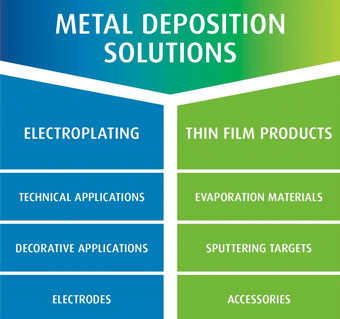
More info
tags: High Power Connector Plating – Longevity High Current Plugs – Solutions High Power Connector Plating – Information High Power Connector Plating – Services High Power Connector Plating –
Would you like more info about comparehigh power connector plating then take a look at https://mds.umicore.com/en/ | Comparehigh Power Connector Plating
Metal Deposition Solutions: A Comparison of High Power Connector Plating
In the world of high-power applications, the demand for reliable and efficient connector plating is on the rise. As technology continues to advance, the need for metal deposition solutions that can withstand high power and extreme conditions is becoming increasingly important. In this article, we will take an in-depth look at the latest developments in high power connector plating and compare the various solutions available in the market.
Understanding High Power Connector Plating
Connector plating is an electrochemical process where a thin layer of metal is deposited onto a substrate, such as copper or aluminum, to enhance its properties. In high power applications, the plating must be able to handle higher current densities and resist corrosion and wear. The choice of plating material and the deposition method play a crucial role in determining the performance and reliability of the connectors.
One of the most widely used plating materials for high power applications is silver. It has excellent electrical conductivity and is resistant to corrosion, making it ideal for use in harsh environments. However, as the demand for higher power and efficiency increases, alternative solutions are being developed to address the limitations of silver plating.
New Connector Plating Standard for High Power Applications
In response to the growing demand for more efficient and reliable connector plating, the International Electrotechnical Commission (IEC) recently introduced a new standard for plug contacts in high power applications. This standard, known as IEC 60664-5-3, specifies the requirements for the design and testing of connector plating in high power applications.
The new standard aims to provide a standardized approach to high power connector plating, ensuring consistency and compatibility among different manufacturers. It also sets specific requirements for the thickness of the plating, the type of base material, and the quality of the bond between the plating and the substrate.
Metal Deposition Solutions for High Power Connector Plating
As the demand for high power connector plating continues to grow, industry players have been investing in research and development to come up with new and innovative solutions. Let´s take a closer look at some of the options available in the market.
Silver Alloys
To improve the conductivity and durability of silver plating, many manufacturers have started incorporating different alloys into their silver plating solution. One example is the addition of platinum to silver, which increases the hardness and wear resistance of the plating. Other popular alloying elements include palladium, rhodium, and gold.
Composite Plating
Composite plating involves the use of multiple layers of different metals to create a highly functional coating. In high power applications, this method is used to deposit a layer of silver onto a copper or aluminum substrate, followed by a layer of nickel or tin to improve the corrosion resistance of the plating.
Thermal Spray Coating
Thermal spray coating is a process where a molten metal material is sprayed onto the substrate to form a protective layer. This method is particularly suitable for high power connectors that require a thicker coating to withstand extreme conditions. Popular materials used in thermal spray coating include copper, nickel, and tungsten.
The Benefits of Choosing the Right Metal Deposition Solution
Choosing the right metal deposition solution for high power connector plating can result in significant benefits for manufacturers and end-users alike. These include:
- Improved electrical conductivity, resulting in higher efficiency and reduced power loss
- Enhanced durability and wear resistance, leading to longer product lifespan
- Better corrosion resistance, ensuring reliability in harsh environments
- Compliance with industry standards, providing compatibility and interchangeability among different manufacturers
- Lower cost of ownership, as the correct choice of plating can reduce the need for frequent replacements and maintenance.
Conclusion
In conclusion, the demand for reliable and efficient high power connector plating is increasing, driving manufacturers to come up with innovative solutions. With the new standard set by the IEC and a variety of metal deposition options available, manufacturers can now choose the most suitable plating solution that meets their specific needs. By understanding the benefits and limitations of different metal deposition solutions, manufacturers can ensure the reliability and performance of their high power connectors in various applications.
To learn more about the latest developments in connector plating, please visit https://mds.umicore.com/en/electroplating/news-media/news/new-connector-plating-standard-for-plug-contacts-in-high-power-applications/.
Comparehigh power connector plating
!–StopPubText–>.
